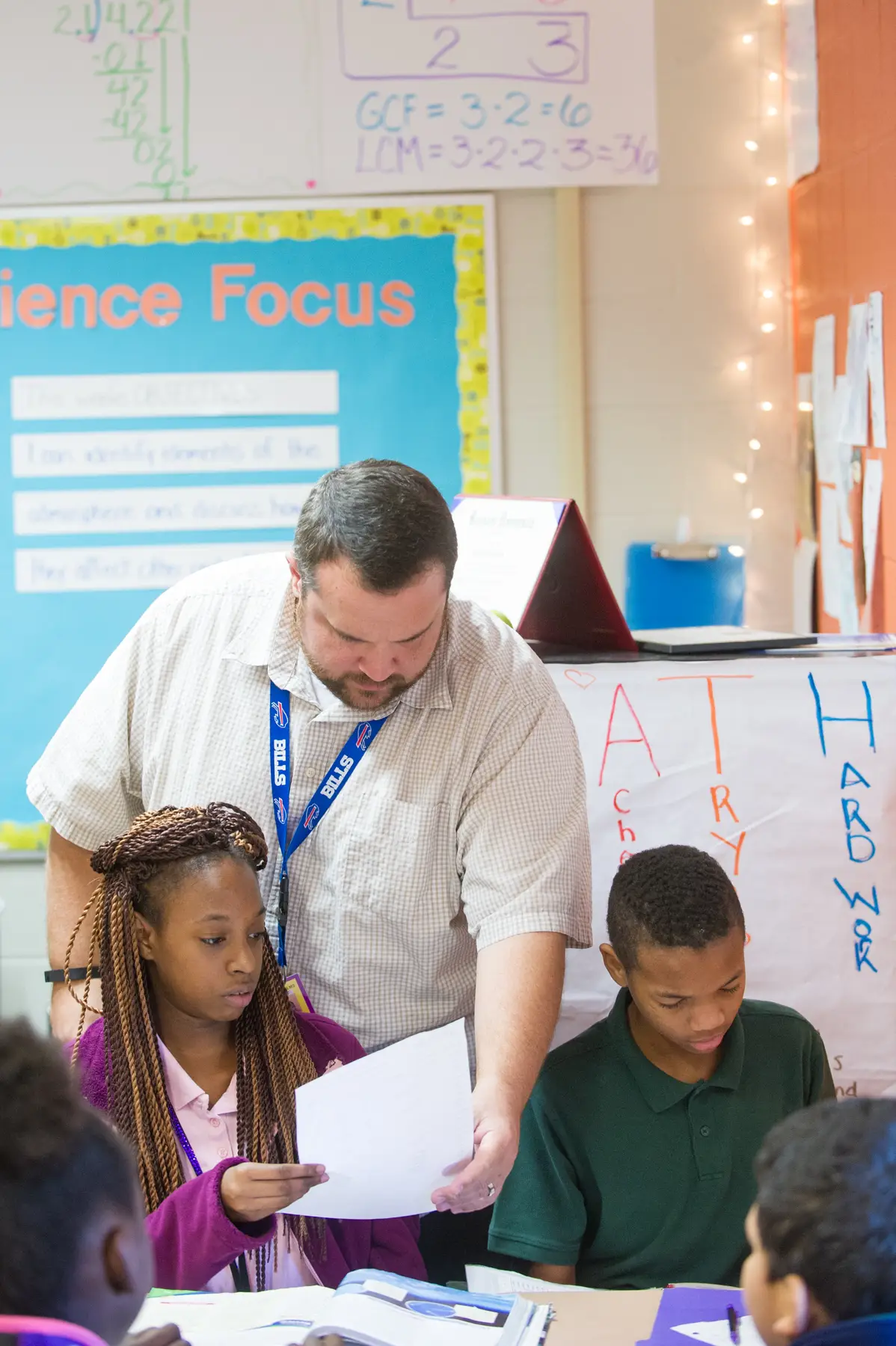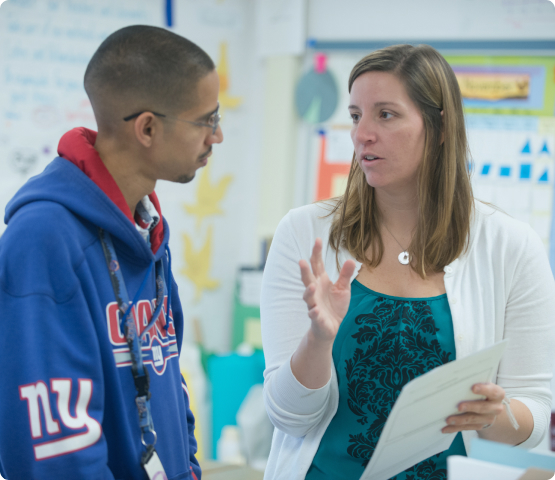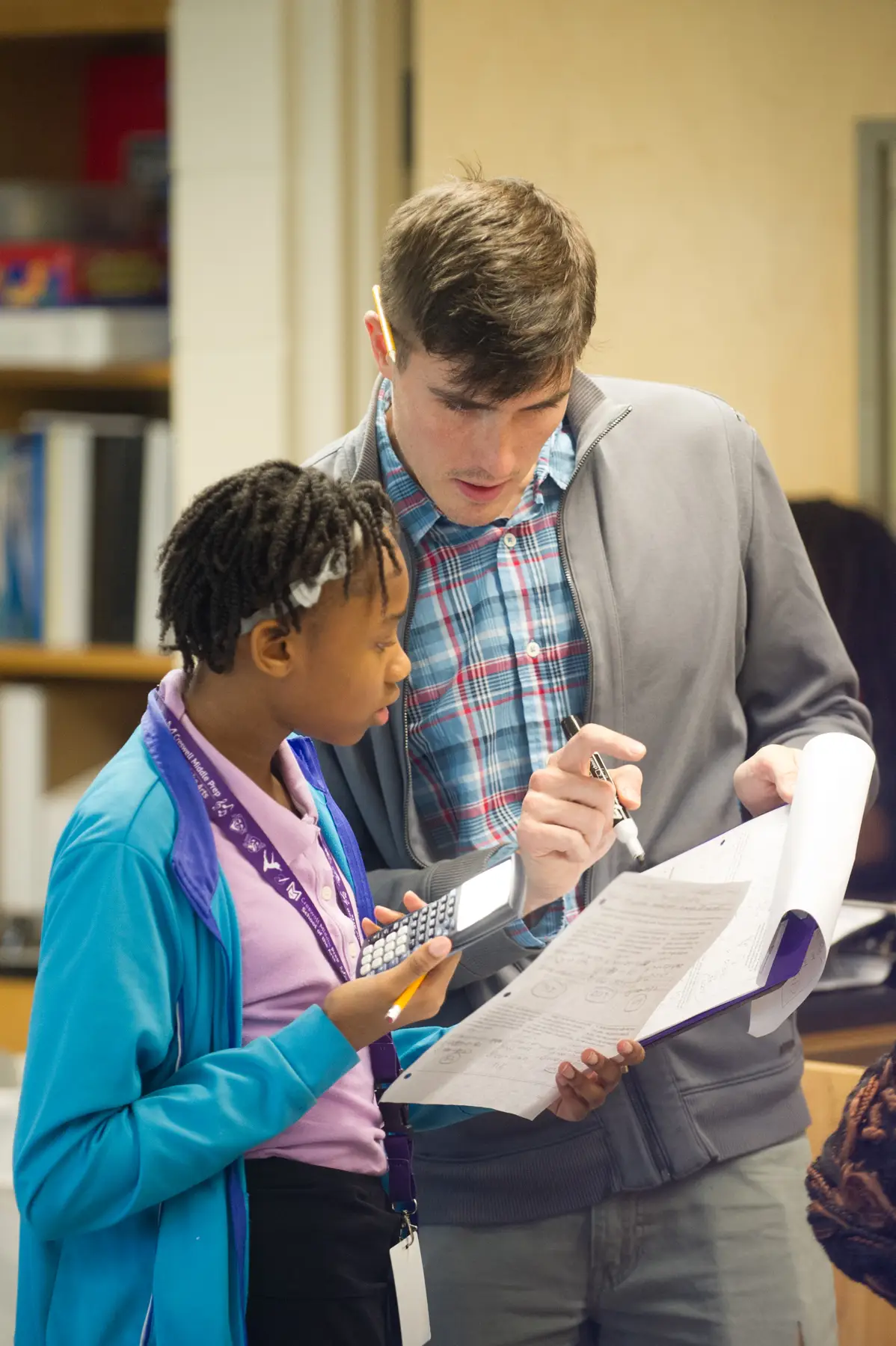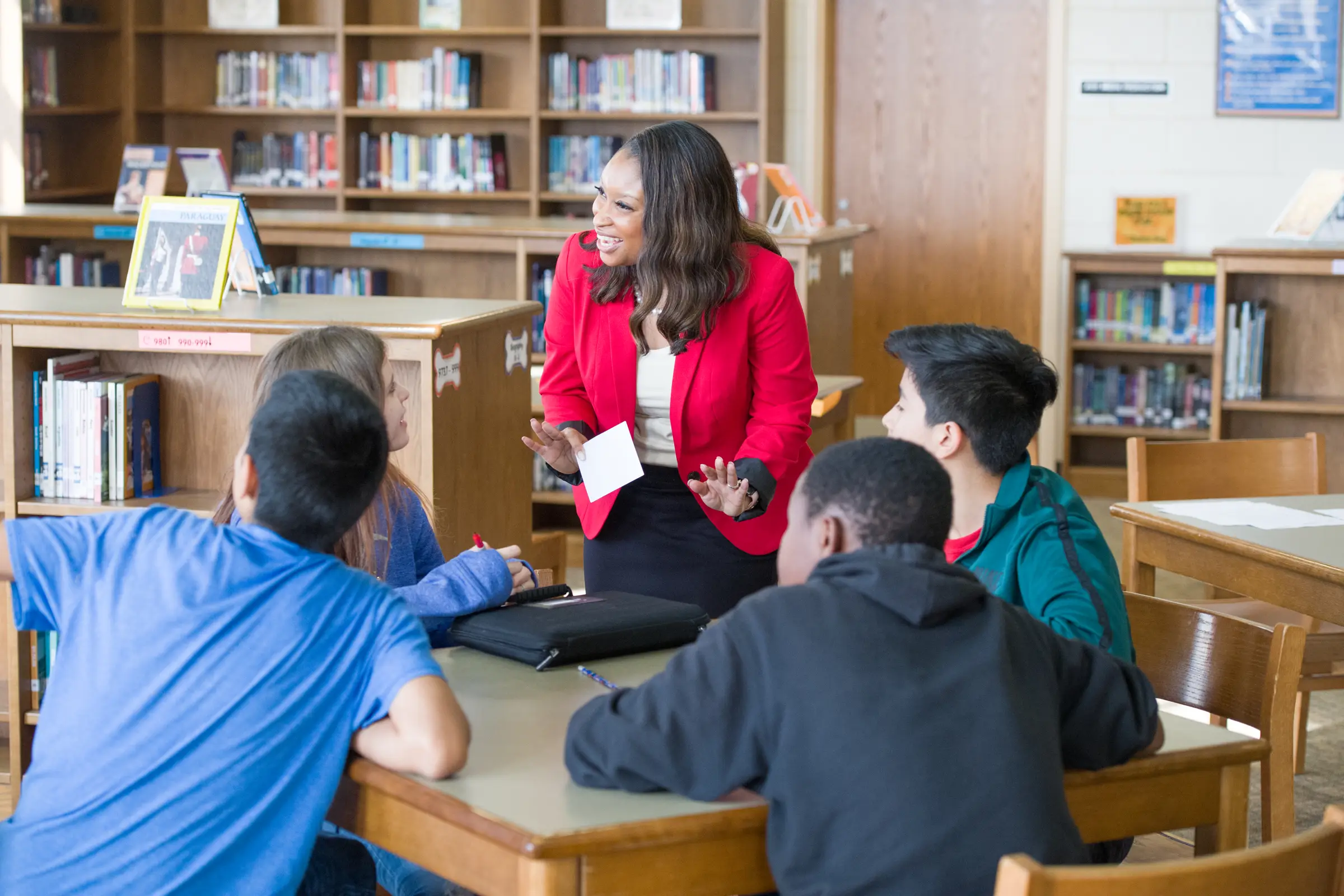Explore the core practices of the Responsive Classroom approach tailored specifically for young adolescents. These strategies address the unique developmental needs of middle school students by fostering a sense of belonging and significance for every student.
Take a more comprehensive look at each practice— including strategies, ideas, articles, and other resources— by clicking "Learn More."
A predictable routine for building meaningful connections, developing respectful and trusting relationships, and meeting students’ developmental needs. There are four components: arrival welcome, announcements, acknowledgments, and activity.

These short breaks, used during whole-class lessons or transitions, get students moving and interacting.
A structure that offers students voice and choice in what or how they learn.

A four-step teacher-facilitated process: set SMART goals, connect the goals to rules, connect the rules to concrete behaviors, and bring the rules to life in everyday ways.

A structured way for students to work together on a specific learning goal, assignment, or project that the teacher organizes.
A process that follows active teaching where students explore and practice, under the teacher’s guidance, the content and skills taught during a lesson.
An instructional delivery strategy in which the teacher presents, explains, illustrates, and demonstrates content to enable students to meet a learning objective. The three phases of active teaching are Teach and Model, Student Collaboration, and Facilitate Reflection.

Bringing our professional development to your school is the most cost-effective way to train your educators in the Responsive Classroom approach to teaching and discipline.
Discover how each practice enhances classroom culture, facilitates effective classroom management, and supports the development of essential skills in students of all ages.